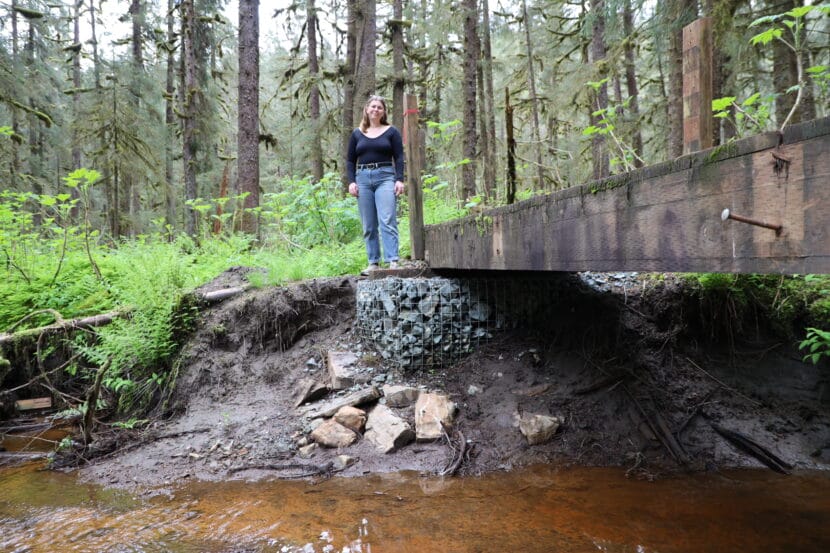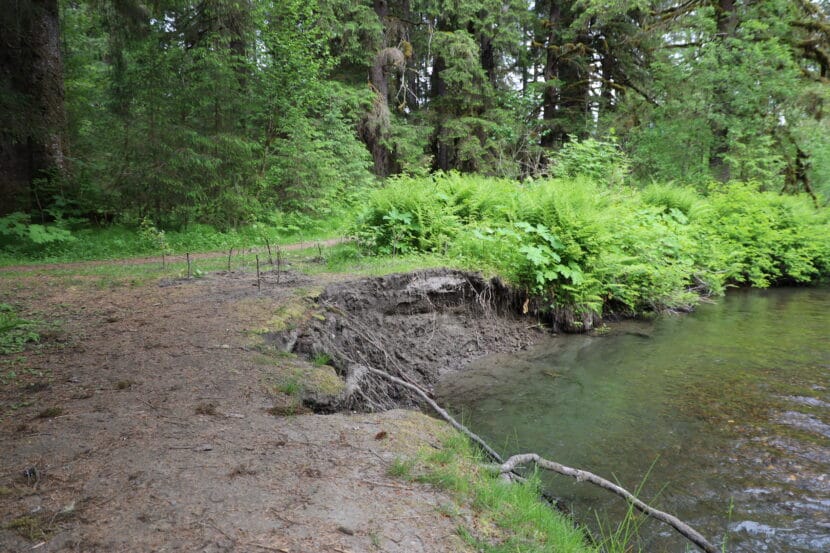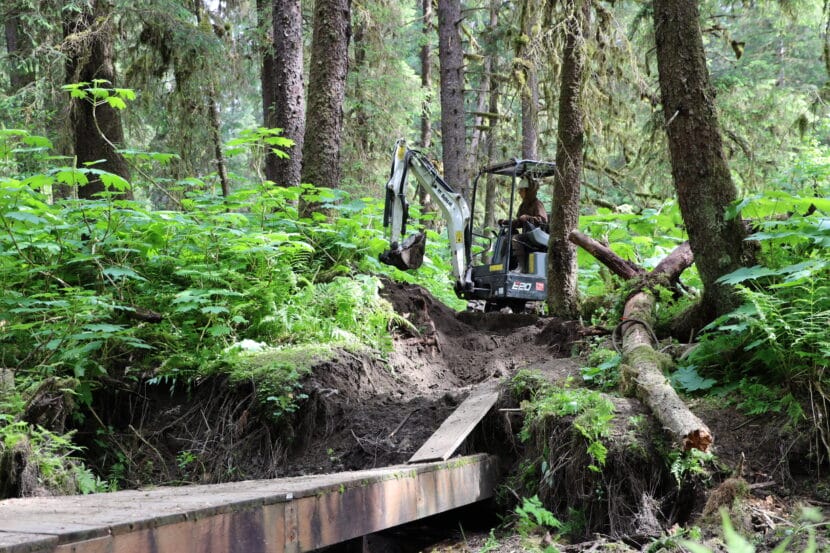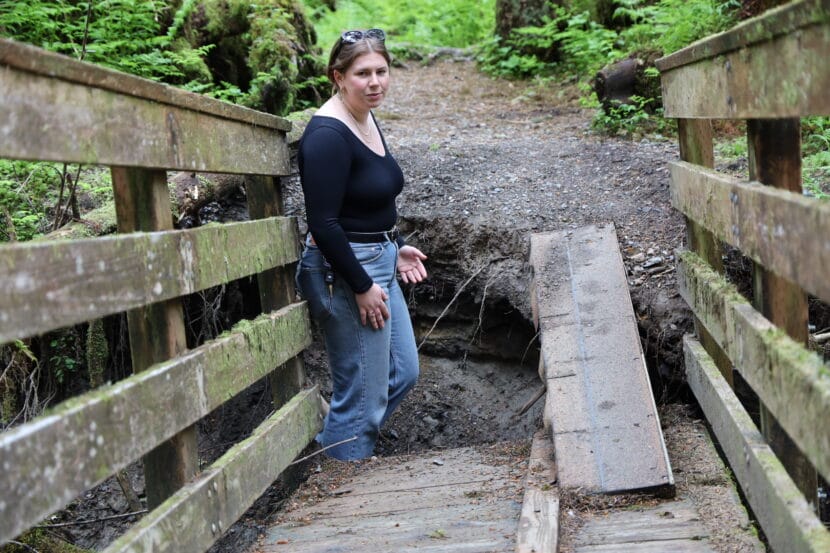
Meghan Tabacek stepped off the narrow path of the Black Bear Trail in Juneau and pointed to a U-shaped bend in Montana Creek where loose dirt and tree roots jut out over the water.
“If this all were to erode out and cut under the bank, then our whole trail could collapse,” she said. “At first glance, this looks pretty subtle and pretty far away from the trail. But give it like, three or four big storm cycles, and that could really get eaten away.”
Tabacek is the executive director of Trail Mix, Inc., a local non-profit that spends each summer clearing brush, downed trees and — occasionally — landslide debris, on trails managed by the City and Borough of Juneau, the state and the Forest Service.
But mostly, her crews work to strengthen trails against the rain that pummels Southeast Alaska.
“We’re used to mud,” Tabacek said. “Mud is our bread and butter.”
What they’re not used to is the intensity of the mud, the erosion and the wash-outs that are wreaking havoc on trails as human-caused climate change makes rainstorms more extreme. Typically, Tabacek says, trails have a lifespan of 10 to 20 years before they need major maintenance. But that’s changing now.
“The time from when we build a trail or do a refurbishment of a trail to the time it needs touch-ups and fixings is shortening,” Tabacek said. “We’re having to do a lot of maintenance that isn’t technically planned.”

Warmer air holds more moisture. So as greenhouse gas pollution drives up global temperatures, rainy Southeast Alaska is becoming even rainier. According to Juneau’s Climate Change report, Juneau’s average annual precipitation has increased 20 inches in the last century. And a lot of that rain is coming down in atmospheric rivers — periods of heavy, prolonged rainfall that are often accompanied by high winds.
An atmospheric river in December 2020 brought record-breaking rain that caused flooding and mudslides across Juneau. It also washed out local trails like the Blackerby Ridge Trail, which took weeks to clear and repair.
Then another storm in 2021 blew down enormous trees that made some trails impassable, like the Herbert Glacier Trail. Tabacek recalls chainsawing and hauling out hundreds of downed trees.
“Those trees would have dropped at some point anyway. But when we have these big storms and big wind events, then they’ll drop at once,” Tabacek said. “So we’ve been seeing some of these things that we have to react to more frequently.”

Storms may become more frequent over time, but Southeast Alaska’s trail system has always taken a beating. James King, who was the executive director when Trail Mix got started back in the 90s, says he remembers cleaning up frequent landslides on the city-owned Perseverance Trail.
That trail was closed just this spring because of landslides.
Like a lot of trails in Alaska, Perseverance was created from an old mining road. Those routes were built to get to resources as fast as possible — not for longevity or climate resilience.
“They go up narrow canyons. They’re going along creeks,” said King, referring to routes which make trails vulnerable to threats like landslides and erosion. “Some of these trails just aren’t in the right spot.”
Now King is the director of Recreations, Lands and Minerals for the Tongass and Chucagh National Forests. In the Tongass, the Forest Service manages nearly 1,000 miles of trails for nearly 3 million annual visitors.
Even without climate change, upkeep on some of these trails has been disrupted as federal funding fluctuated over the years. But right now the agency is relatively flush. And as they work on a new iteration of the Tongass forest plan, climate change and tourism are some of the most pressing priorities.

“So rerouting, rethinking how we get people through these places and how we build infrastructure that’s more resilient, that reduces that long term maintenance? That’s a big goal of ours,” King said.
Building trails with climate resilience in mind might mean putting in larger bridges that can handle larger floods. It might also mean laying down gravel paths to weigh down the soil and stop water from pooling or rerouting trails so they’re less vulnerable to erosion.
Those improvements tend to make trails more accessible for hikers of all abilities too.
Just down the Black Bear Trail, crews are building up a new fortified abutment for a lopsided wooden bridge. The bridge itself is in good condition, but it falls short of one bank and slumps into the mud. Erosion caused it to collapse.

“You see trail damage like this, and it’s just like a line of dollar signs floating down the water,” Tabacek said.
On a sunny spring day, the creek below the bridge is running low and the forest undergrowth is full of fresh fans of Skunk Cabbage and Fiddlehead Ferns.
“We get a couple weeks of rain and then it gets sunny for two days and everything goes ‘poof,’ she said.